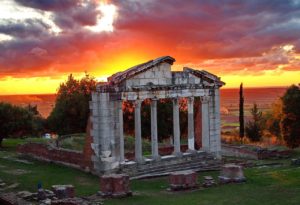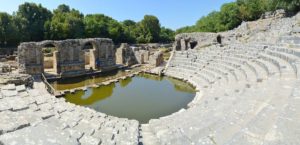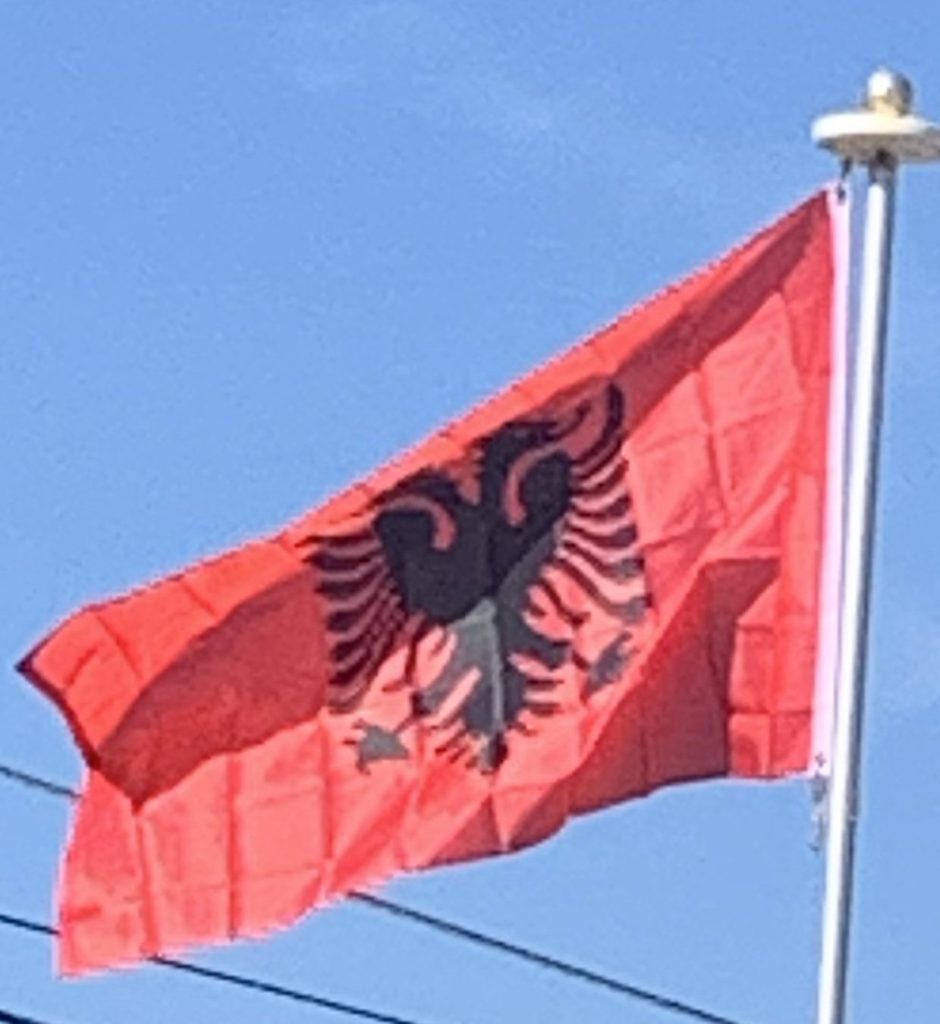Nowadays, Albanians call their country Shqipëri or Shqipëria. As early as the 17th century the placename Shqipëria and the ethnic demonym Shqiptarë gradually replaced Arbëria and Arbëresh. The two terms are popularly interpreted as “Land of the Eagles” and “Children of the Eagles”.
History:
Early History:
Apollonia was an important Greek colony on the Illyrian coast along the Adriatic Sea and one of the western points of the Via Egnatia route, that connected Rome and Constantinople.
The first traces of human presence in Albania, dating to the Middle Paleolithic and Upper Paleolithic eras, were found in the village of Xarrë close to Sarandë and Dajti near Tiranë. The objects found in a cave near Xarrë include flint and jasper objects and fossilized animal bones, while those found at Mount Dajt comprise bone and stone tools similar to those of the Aurignacian culture. The Paleolithic finds of Albania show great similarities with objects of the same era found at Crvena Stijena in Montenegro and north-western Greece.

Several Bronze Age artifacts from tumulus burials have been unearthed in central and southern Albania that show close connection with sites in south-western Macedonia and Lefkada, Greece. Archaeologists have come to the conclusion that these regions were inhabited from the middle of the third millennium BC by Indo-European people who spoke a Proto-Greek language. A part of this population later moved to Mycenae around 1600 BC and founded the Mycenaean civilization there.
In ancient times, the territory of modern Albania was mainly inhabited by a number of Illyrian tribes. The Illyrian tribes never collectively regarded themselves as ‘Illyrians’, and it is unlikely that they used any collective nomenclature for themselves. The name Illyrians seems to be the name applied to a specific Illyrian tribe, which was the first to come in contact with the ancient Greeks during the Bronze Age, causing the name Illyrians to be applied pars pro toto to all people of similar language and customs.
The territory known as Illyria corresponded roughly to the area east of the Adriatic sea, extending in the south to the mouth of the Vjosë river. The first account of the Illyrian groups comes from Periplus of the Euxine Sea, an ancient Greek text written in the middle of the 4th century BC. The south was inhabited by the Greek tribe of the Chaonians, whose capital was at Phoenice, while numerous colonies, such as Apollonia, Epidamnos and Amantia, were established by Greek city-states on the coast by the 7th century BC. The west was inhabited by the Thracian tribe of the Bryges.

The Illyrian tribe of the Ardiaei centered in Montenegro ruled over much of nowadays Albania. The Ardiaean Kingdom reached its greatest extent under Agron, son of Pleuratus II. Agron extended his rule over other neighboring tribes as well. After Agron’s death in 230 BC, his wife Teuta inherited the Ardiaean kingdom. Teuta’s forces extended their operations further southward into the Ionian Sea. In 229 BC, Rome declared war on the kingdom for extensively plundering Roman ships. The war ended in Illyrian defeat in 227 BC. Teuta was eventually succeeded by Gentius in 181 BC. Gentius clashed with the Romans in 168 BC, initiating the Third Illyrian War. The conflict resulted in Roman conquest of the region by 167 BC. After that the Roman split the region into three administrative divisions.
Middle Ages:
After the Roman Empire was divided into East and West in the 4th century, the territory of Albania remained within the Eastern Roman Empire. In the centuries that followed, the Balkan Peninsula suffered from the Barbarian invasions. The Illyrians are mentioned for the last time in a text from the 7th century. Towards the end of the 12th and beginning of the 13th centuries, Serbs and Venetians started to take possession over the territory.
